Caesar Kunikov: the star and the death of the legendary commander. Part of 5. Little Earth
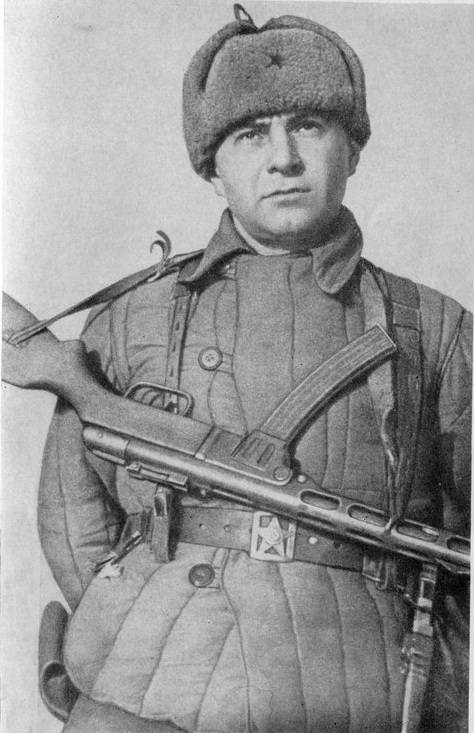
Caesar Lvovich Kunikov on his most famous photo
In the case of the Novorossiysk landing operation, everything went wrong according to the plan initially. In fact, the planned operations “Mountains” and “Sea” failed. Thus, according to the plan, the command of the compound of the 47 Army was to throw off the Nazis from the mountain passes held by them and eventually break into Novorossiysk. Thus, the 47-I army facilitated the landing of troops, pulling forces to itself. But she did not cope with the task. Therefore, the interacting forces in the offensive changed places. Now the landing was supposed to assist the 47 Army.
In the evening of February 3, the personnel of Major Kunikov’s troop unit was built. Many paratroopers made a request to leave part of the suhpayka to collect more ammunition. The commander supported his Marines. Already in the dark, the detachment was loaded onto the boats, quickly, neatly, extremely mechanically, as taught. Caesar, having received reports from the commanders of the landing groups, climbed the flagship MO-084 (type MO-4) together with the division commander Nikolay Sipyagin. The weather was typical February - the North-Ost raged, it was drizzling cold rain and snow.
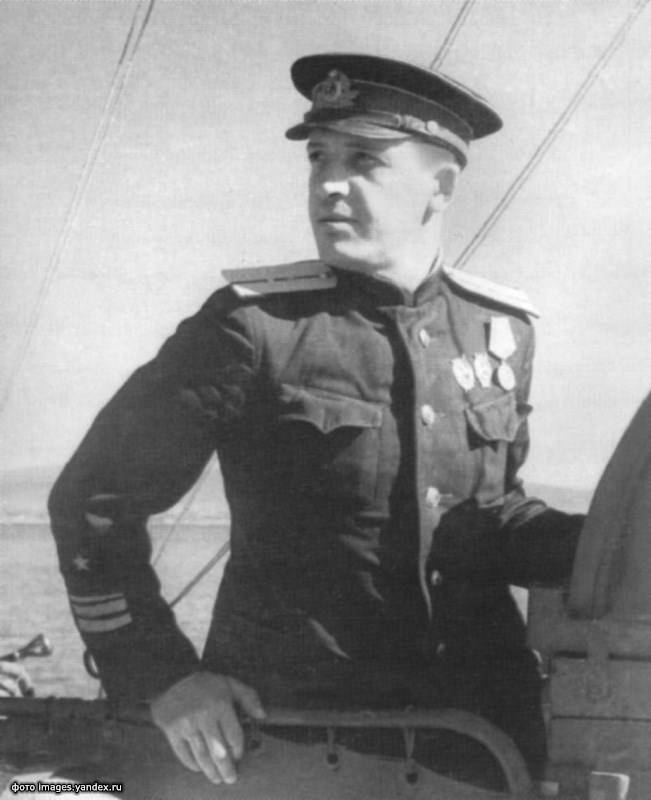
Nikolai Ivanovich Sipyagin
With a delay from the Gelendzhik Bay, a caravan of Rear Admiral Bassist with the forces of the main landing force from the 255 of the Red Banner Marine Brigade departed. A few hours earlier, ships from the 83-th Red Banner Marine Brigade left Tuapse. All of them headed for South Ozereyka, which later became the tragic page of our stories.
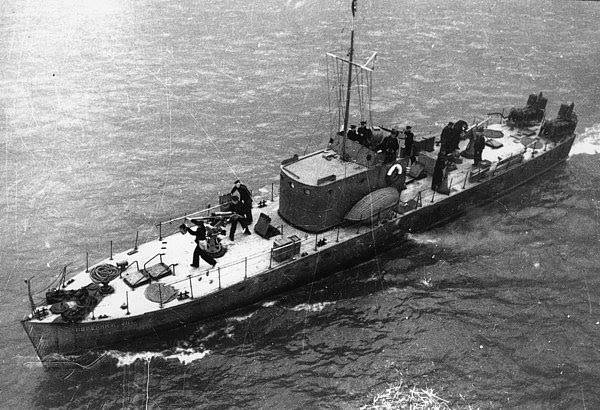
Sea Hunter type MO-4 (in the photo "named" - "Sea Soul")
Finally, it's time Kunikova and Sipyagina. The flagship "Sea Hunter" with the rest of the caravan rushed to Novorossiysk and arrived at the deployment point in the bay exactly on time. In 01: 30, coastal and army artillery opened hurricane fire at enemy positions from the Sujuk Spit to Cape of Love, ten minutes later the fire was moved deep into the enemy's defense. But a particularly unpleasant surprise awaited the German gunners, entrenched in the Cape of Love and leading the most active fire. An inconspicuous low-speed wooden schooner "Mackerel", dangling in the bay, suddenly plunged into the blue smoke and lit the night sky with fiery trails. The fact is that the Soviet "Kulibins" managed to re-equip the "Mackerel" under the installation of the RS "Katyusha". So the wooden peace trough turned into a very dangerous predator, extinguishing the enemy battery.
The Nazis did not have time to come to their senses when a smoke curtain from a smoke curtain delivered by torpedo boats emerged on the shore of the Sipyagin division, leading continuous machine-gun fire on the enemy. The effect of surprise was stunning. Half an hour after the disembarkation of the squadron of the detachment, they used their flare guns to designate their command posts. On the move, the fighters of the reserve group, which Kunikov kept with him, seized several enemy artillery guns. Even in Gelendzhik, the commander sought to separate the artillery detachment, but its weight was too great. Therefore, immediately after disembarking and capturing trophies, Kunikov formed a specific artillery division, informally referred to as the “separate trophy trophy battalion”. A KP Kunikova located in the dugout of the very artillery battery, which "gave" guns to the landing force.
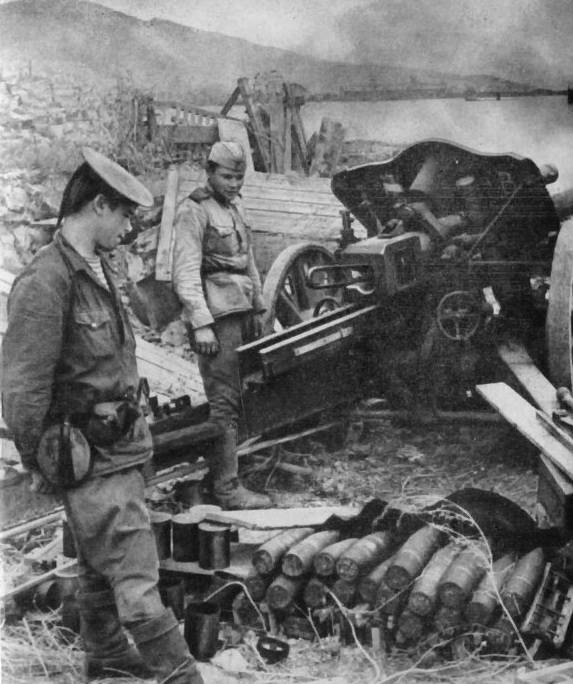
"Kunikovtsy" at the next trophy gun
Soon the radio station KP began to speak openly: “The regiment landed successfully. Moving forward. Waiting for reinforcements. " This uncomplicated trick was supposed to make the enemy pull off more forces to the landing party and put him into confusion. Less than an hour, the battle on the bridgehead crumbled into dozens of scattered battles, in which the Kunikovo school rules came to the fore: in the landing party there was one soldier in the field. For several hours, the “Kunikovtsy” fought off dozens of attacks, being under constant German artillery fire. However, all groups of the squad completed the task.
At about half past four in the morning a part of the 2-echelon landed under the command of Vasily Botilev. As follows from the records in the journal of hostilities, at that time KP Kunikov was located a couple of hundred meters from the Nazi positions. Botylev received orders to move to Stanichka, clearing her from the enemy. To 8: February 00 4 February, the botylivka group, grinding up to a company of Germans, broke into the outskirts of Stanichka on Komarovsky Street (now the southern tip of the Admiral Serebryakov embankment), standing opposite the school. However, the order was followed to take up the defense and not to take the school building. Even then, Caesar realized that with the available forces and the acute shortage of ammunition to continue to attack - the same thing as to jump into the bag yourself, stretching the front and the flanks.
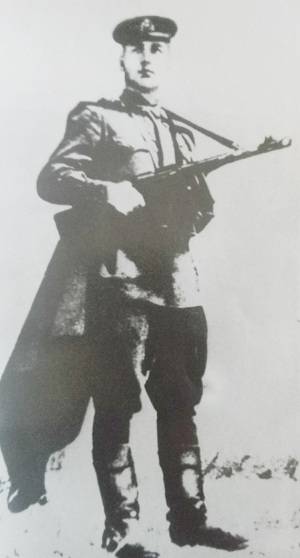
Vasily Andreyevich Botylev
Two hours after the group of Botylev, groups of Ivan Yezhel and Ivan Zhernovy landed on the bridgehead. They also, after taking up their positions, went on the defensive. By this time, “Malaya Zemlya” was about 3 km wide along the coast and went inland to 2 km. During the whole night, the troops destroyed up to a thousand Germans, dozens of pillboxes and artillery pieces.
But by the second half of February, the situation became critical. The landing in the Southern Ozereyka failed, and the army units were stuck on the mountain passes. The Germans already guessed that on the bridgehead they were confronted by only a few hundred Marines with virtually no security. The enemy began to build up forces, sending to the Stanichka all the newly liberated troops, wanting to simply drop the landing force into the sea or at least cut it off from the coast by striking the flanks. The trouble does not come alone, the landing felt the lack of ammunition more and more, more and more fighters began to fight trophy weapons, not to mention the complete absence of food and water.
Sad photos of the defeated landing at the Southern Ozereyka
The enemy’s day attacks were not only reinforced by armored vehicles, but were interspersed with raids aviation. Diving Ju 87 bombers, accompanied by Messerschmitt Bf.109, literally plowed less than 10 square kilometers of the bridgehead. Finally, the landing handed over the command "Hurricane", which meant the ultimate threat of the death of the detachment. This was a conditional signal for the command of firing the firing range of the bridgehead by the entire artillery of the base and army. The sun faded for several hours, but the Germans could not move the landing and a dozen meters.
On the night of February 5, gusts of wind intensified, a storm raged on the sea, and the replenishment approach became impossible. No help, no ammunition, no provisions. Even the thin thread of the Sipyagin division connecting the paratroopers with the base was cut off. Yes, and the division itself was pretty much worn out, because it was he who not only rushed between Gelendzhik and Novorossiysk right under the Germans' trunks all night, but also carried out fire cover during the landing. Kunikov ordered to save ammunition, firing automatic weapons only with single shots.
The last boat on the night from 4 to 5 in February delivered the report of Major Kunikov to the command: “By observation, the enemy brought or removed parts from the Myskhako area towards Novorossiysk ... continuously regrouping parts in connection with the actions of the enemy, strengthening individual sections. People are very tired. Part of the wounded refused to leave the battlefield. There was no water all day even for the wounded. ”
Kunikovsky armored men at the railway embankment in the area of "Little Earth" (now neither mounds nor sleepers and no mention)
February 5 began with the traditional “small land” alarm clock, i.e. from the shelling and aerial bombardment. Then the landing call of the “Kunikovtsevs” was born: “The Germans can only pass through our corpses”.
Suddenly, after an avalanche of artillery attacks, everything was quiet. As it turned out, some low-grade Goebbels decided to work out their propaganda schnapps and drove to the best loudspeakers, of which calls to surrender began in broken Russian. Naturally, sent to a known address, the Germans resumed their attacks. The whole day of February 5 was in defensive battles, the signal "Hurricane" was repeated on the radio twice. The base did its best to support the landing force, but neither the daytime nor the excitement of the sea allowed the boats to moor in the bridgehead. A desperate attempt was made to supply troops from the air, dropping ammunition and provisions with aircraft. But it turned out to be ineffective - part of the cargo fell into the sea, and part of it fell on the Fritz.
At night, the sea calmed down somewhat. In addition, it became clear that no matter what the weather, landing at any cost required reinforcement. Otherwise all the victims will be in vain. By this time, it became obvious that having such a bridgehead, our troops and fleet sealed the bay, and the very fact of its existence practically nullified the enemy’s attempts to launch an offensive in order to reach the Sukhumskoye Highway.
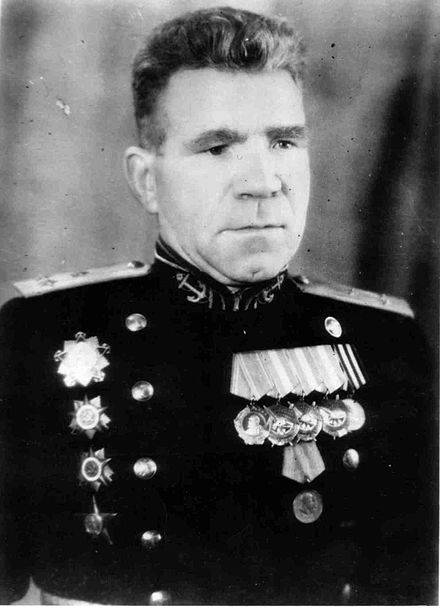
Alexey Potapov
On February 5, Rear Admiral Kholostyakov received an order from the command fleet start on the night of February 6 a landing in the area of Stanichki of units of the 255th Marine Brigade. This meant that the auxiliary direction of the landing became the main. Kunikova was encouraged to prepare for the adoption of a replenishment of about 4 thousand people. At the same time, at the marinas of Gelendzhik, the marines of the 255th brigade of Aleksey Potapov were already loaded on the “Red Georgia” and “Red Adjaristan” (“Elpidifor” series) gunboats, minesweepers and patrol boats. And at 22:30 on the same day, the landing force was unloaded in the area of the fish factory in Novorossiysk.
The competent work of our artillerymen on the destruction of enemy searchlight installations and the suppression of their artillery allowed the Potapov Brigade to remain unnoticed until landing on the coast. On the same days, the bridgehead began to grow - the Germans were beaten out of the Aleksino village, which is south of the Sujuk spit. Following the 255 Brigade, units of the 165 Infantry and 83 Marines of the Brigade successfully landed on the bridgehead.
Destroyed German self-propelled gun Sturmgeschütz near the mountain Koldun near Myskhako
Suddenly, after two days of incessant heroic battles, Caesar Kunikov was out of work. The command of the NBMB removed both the commander and part of his assault squad from the front line. Now their task was to protect the coast of the beachhead, receive and unload boats, as well as evacuate the wounded. The headquarters of NVBB, as a supply base, needed its own full representative in Stanichka. Naturally they became Kunikov, at the initiative of Kholostyakov, having received the official position of the “starmornach” (senior marine officer).
Quiet rear, however, the coastal strip of the “Little Earth” can be called only in feverish delirium. The Germans were grinding their teeth to the roots with shame, that several hundred Marines first fought off the coast, and now, right under the trunks of their artillery, they organized their “field” small jetty, and even successfully functioning. Therefore, they did not spare either shells or air bombs, as soon as they felt the approach of the next transport. However, anyway, Kunikov didn’t like the new assignment, he lost his independence, that right to wage “his own” war with the enemy on the front line. But the authorities understood that whatever Caesar did not just do everything in his power in this position, he would just do it ...
The defense of the bridgehead along the coast Kunikov instructed the groups Yezhel and Bakhmach. The defense was supported by the “captured artillery division” formed during the landing, which was equipped on the territory of the former coastal battery NBMB near the village of Aleksino. The Pakhomov and Pshechenko groups were directly involved in receiving boats with replenishment, ammunition and food, and the injured were sent to the “Big Land” in Gelendzhik. By that moment, the legendary commander had few days left to live ...
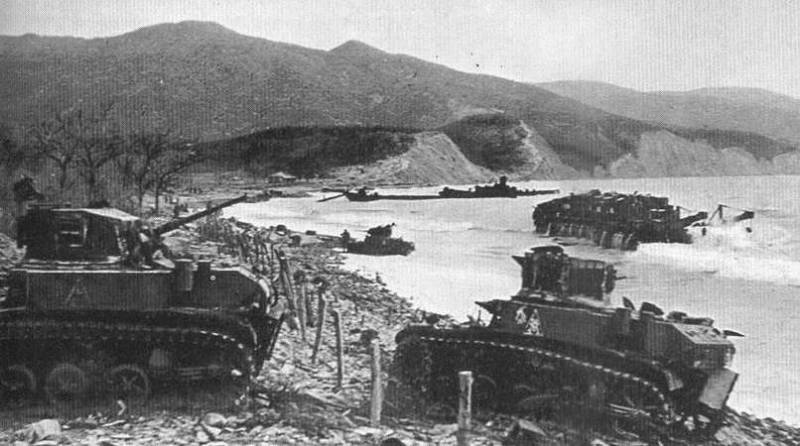
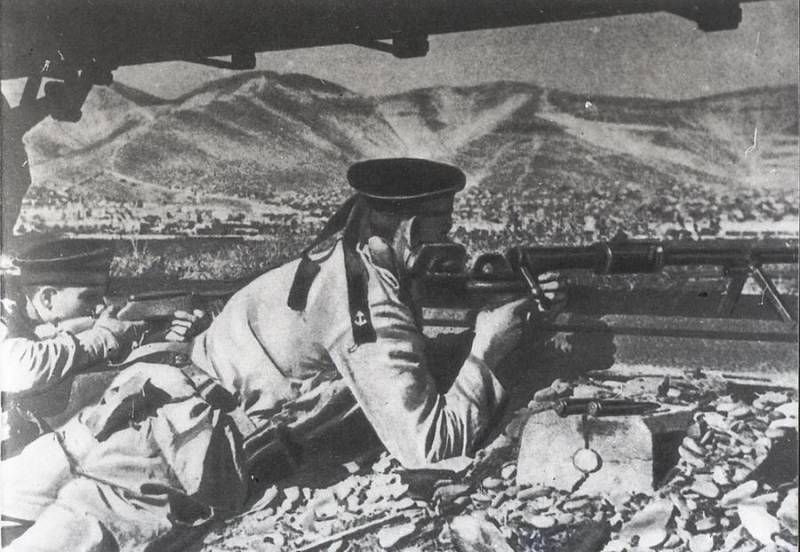
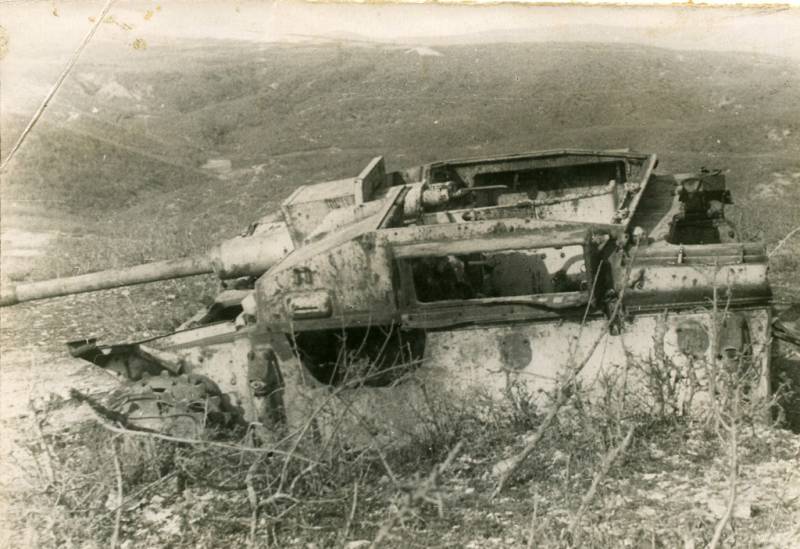
Information